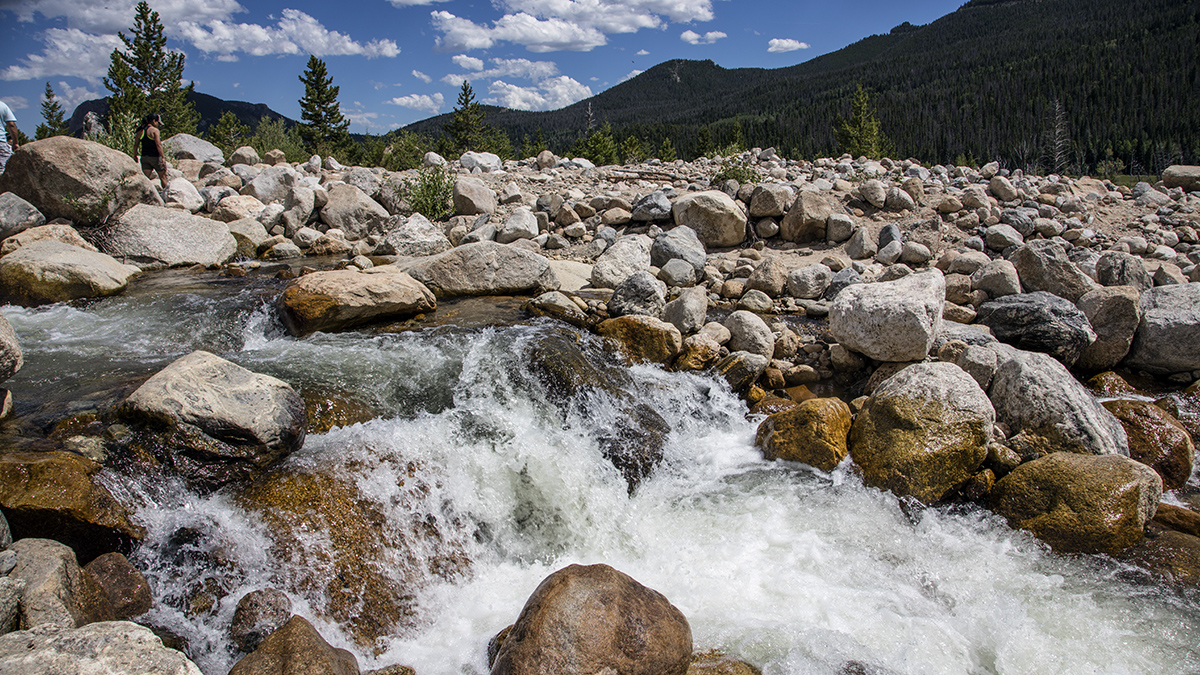As winter gives way to spring, seasonal snowpack in the American West begins to melt.
Though some of that melt flows over and through shallow alpine soil, new research shows that much of it sinks into bedrock where it percolates for years before resurfacing. Fresh snowmelt makes up less than half of the water in the region’s gushing spring streams, according to the study.
The new finding could improve water resources forecasts. Hydrologic models, which inform the forecasts, largely overlook groundwater contributions and assume the spring’s heavy flows come directly from seasonal snowmelt.
The authors of the study, published in Communications Earth & Environment, used a radioactive isotope of hydrogen known as tritium to measure when the water in 42 western U.S. catchments fell as precipitation.
They found that during late winter, when rain and snowmelt were scarce and streams were fed primarily by groundwater, the water fell as precipitation an average of 10.4 years ago. Even during spring, when the same streams were overflowing with fresh runoff, their chilly waters had an average age of 5.7 years, still indicating significant contributions from groundwater.
A Subterranean Bucket
Hydrologic models typically simulate mountains as impermeable masses covered with a thin sponge of alpine soil, said the study’s first author, Paul Brooks, a hydrologist at the University of Utah. The sponge can absorb some water, but anything extra will quickly drain away.
“Snowmelt is being recharged into groundwater and is mobilizing groundwater that has been stored over much longer [periods].”
However, over the past few decades, scientists have uncovered a steady stream of hints that mountains may store huge volumes of water outside their spongy outer layer. Many high-elevation creeks carry dissolved minerals similar to those found in groundwater, suggesting a subterranean origin. Scientists studying healthy alpine ecosystems in arid conditions have wondered whether plants were tapping into a hidden reservoir of water.
Though snowmelt and rainfall immediately increase streamflow, the relationship is not intuitive. “What appears to be happening is that snowmelt is being recharged into groundwater and is mobilizing groundwater that has been stored over much longer [periods],” said James Kirchner, a hydrologist at Eidgenössische Technische Hochschule Zürich who was not involved in the research.
In areas where the mountains were made of porous sandstone, waters monitored in the new study were much older. In one such stream, the average age of water in winter was 14 years.
Mountains are “more like a bucket with a sponge on top.”
The authors were able to convincingly demonstrate the age of the flows because they used tritium, Kirchner said. Though scientists have previously used tritium to date water from individual streams and large bodies such as oceans and lakes, this study is the first to use tritium to date alpine groundwater and snowmelt across multiple catchments, Brooks said.
On the basis of historic flows, annual precipitation, and the ages of the stream water, the mountains could store an order of magnitude more water than accounted for in current models, Brooks said. As opposed to the impermeable masses in traditional models, he explained, mountains are “more like a bucket with a sponge on top.”
This finding could change how scientists think about the alpine water cycle. “If precipitation takes, on average, years to exit as streamflow, that means that streamflow in any one year is a function of years of climate and weather,” Brooks said. That means forecasters should consider more than just the most recent snowpack when estimating spring flows and potential flooding.
But further research is needed to unearth the role mountains play in water storage. The current study is limited because it covers only snowmelt-driven streams in the arid western United States, Kirchner said. Things might work differently in wetter places, he added.
—Mark DeGraff (@markr4nger.bsky.social), Science Writer
